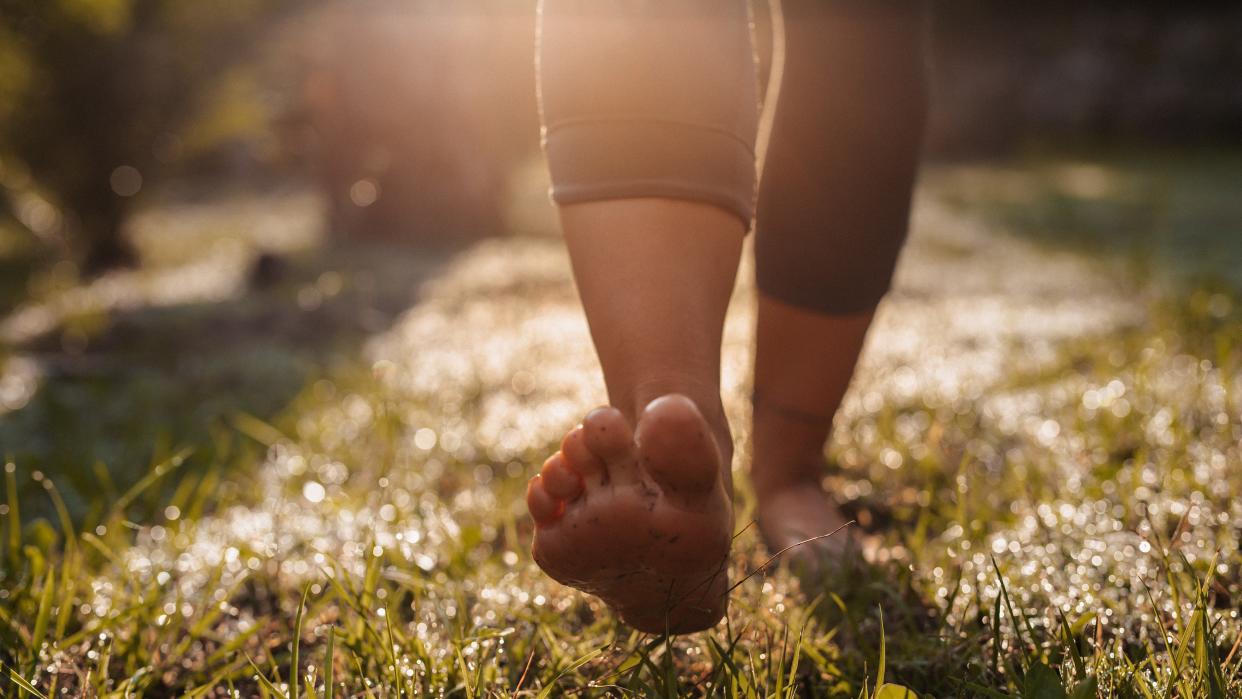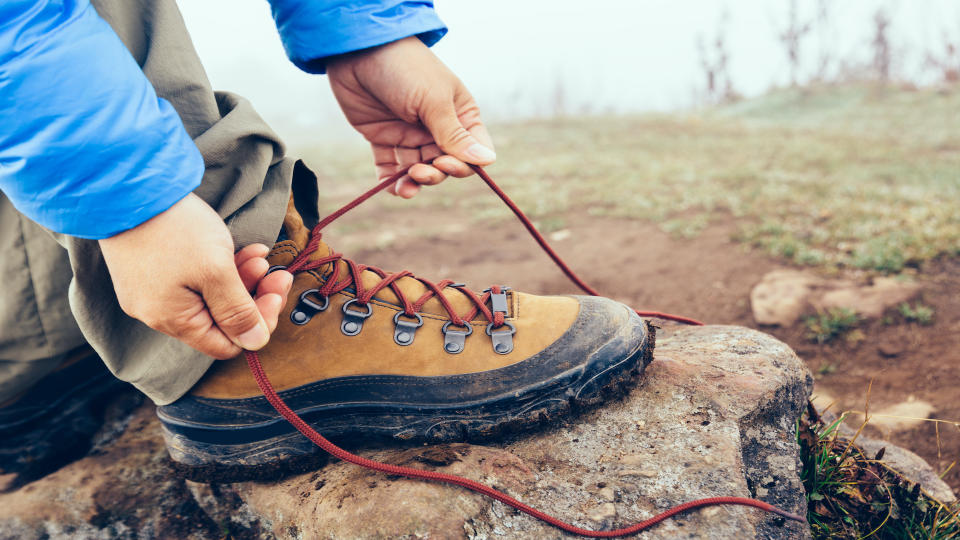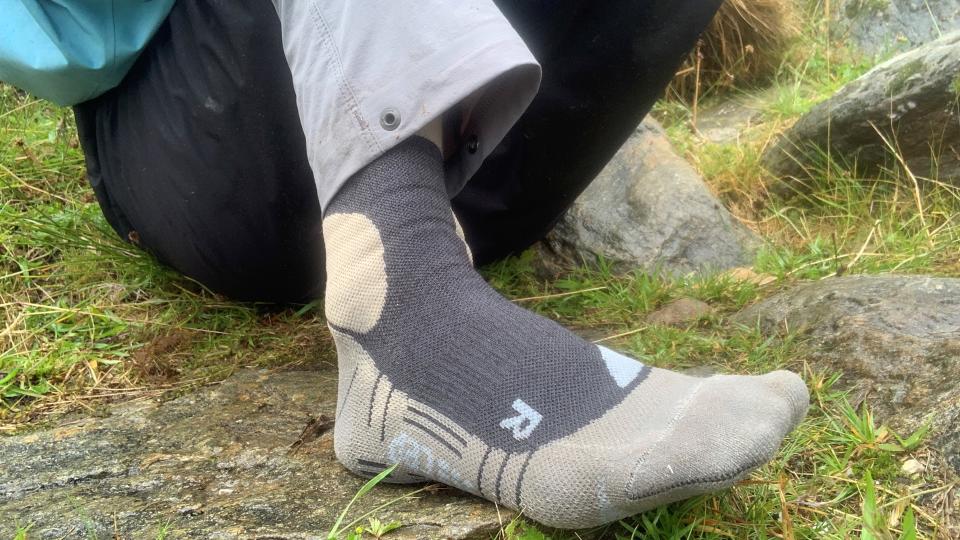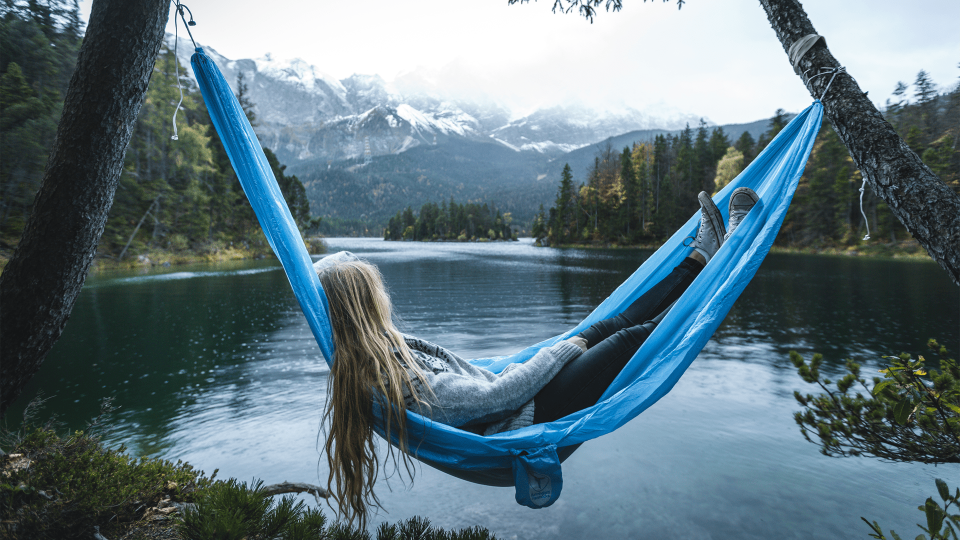How to prevent – and relieve – swollen feet on a hike

Walking for miles through beautiful scenery is any hiker’s idea of heaven, but if you’re prone to uncomfortable swelling in your feet when you get out in the hills, you might be having second thoughts.
Swelling, medically known as oedema, is an accumulation of fluid. It is a pretty normal part of hiking where you spend hours on your feet, and it usually resolves quickly, but when it becomes uncomfortable, you’re going to want to take action. If you’re suffering from extreme swelling or swelling that doesn’t go down, consult a doctor, but if you’re just keen to cut down on normal swelling on your next long hike or backpacking trip, there are a few measures you can take that may be helpful.
1. Wear boots that allow a wiggle
It’s definitely possible that your shoes are the problem. Unlike your everyday shoes, you’ll want hiking boots (or hiking shoes) that are a little bigger than your normal size. Hikers typically go up by a half or whole size so their feet have room to swell and any swelling doesn’t cause other problems like blisters. It’s also worth looking into styles that are wide-fitting, and don't have a tapered toe box, or even barefoot shoes for feet that really don’t like conventional shoes.
A good rule of thumb is that once you’re wearing your boots with hiking socks, you can comfortably wiggle your toes (and you should make a point of wiggling your toes at each break you take).

2. Laces taut but not tight
Once you’ve selected a good pair of walking shoes, make sure that you’re lacing them properly to help cut down on swelling as lacing that’s too tight or inconsistent may be placing undue pressure on your feet. As we explain in our article on how to tie hiking boots, there are different ways to lace your shoes and you may want to try different techniques. The Window Lacing technique may help to relieve your foot swelling, but in general, remember the gold rule that lacing should always be taut but not tight.
3. Consider compression
You’ll often hear that you should avoid tight-fitting clothing that cuts off the circulation to avoid swelling, and while that’s generally true, your socks may be a bit of an exception. If you’re dealing with a lot of swelling on your hikes, you might want to try compression socks, which some research suggests can cut down on swelling (though the science is mixed).

4. Free your feet
When you’ve finished walking, as soon as you can, get out of your hiking boots. If you’re on a day hike, bring a comfortable pair of trainers or even sandals for the drive home and if you’re backpacking, get your shoes off when you reach camp (in warm weather, you can clip some flip flops to your backpack to wear as camp shoes).
5. Prop up
Elevating your feet is standard advice for anyone dealing with swelling and might be effective when you finish your hike. If you’re home, it’s easy to lie down and either bring your legs up against the wall or up onto a chair or stack of cushions. If you’re camping, find a boulder, a tree, use your backpack or hop in your hammock to raise your legs. Make sure your feet are higher than your heart to assist gravity in pulling fluid out of your feet and set a timer on your GPS watch for 10 minutes.

6. Soak (or plunge) your tooties
Soaking your feet might also help reduce swelling after a hike, and obviously you can achieve this with a nice bath when you get home. If you’re still out in the woods, however, don’t worry – find a nice cold river or lake and dip your feet for a few minutes to help take care of swelling. If you fancy taking a plunge, make sure you read up on wild swimming safety first.

